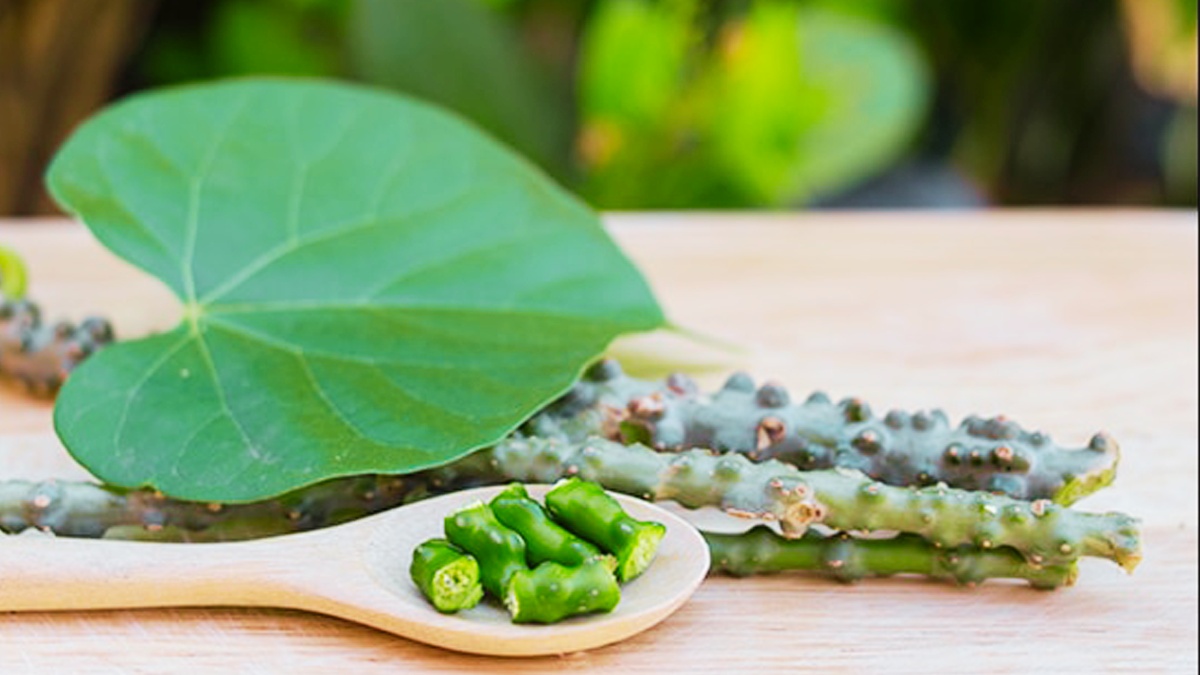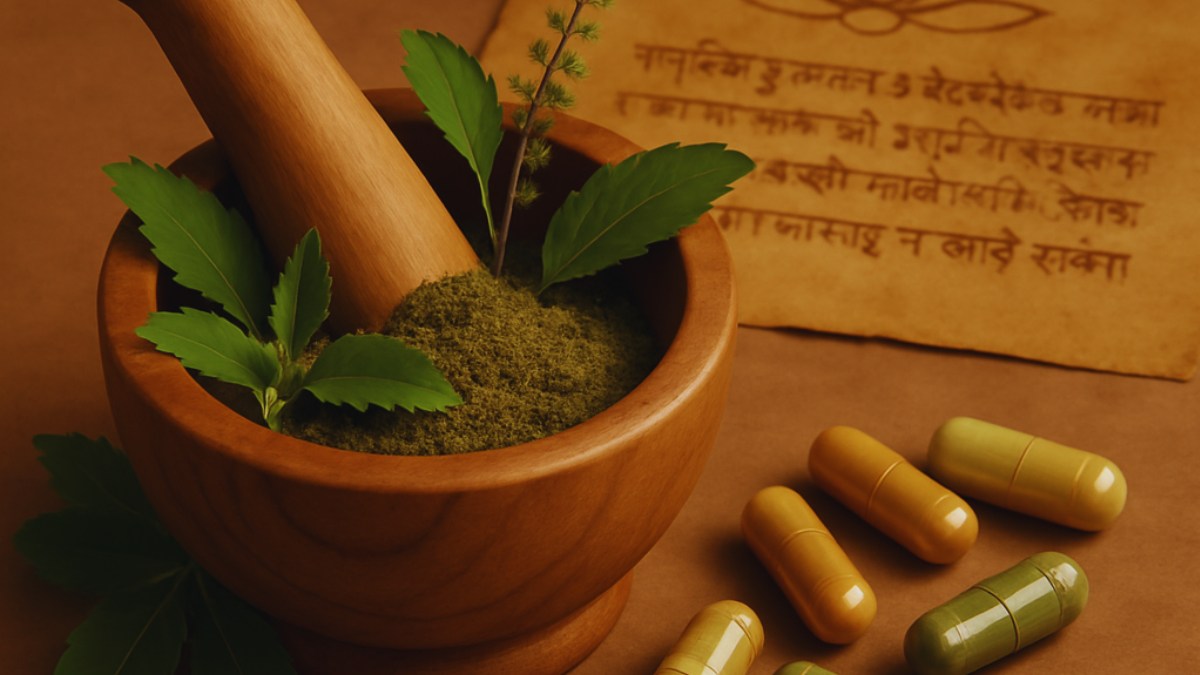The stems of Guduchi are sometimes used in textile dyeing for their yellow tint, while the roots and leaves are utilized in traditional crafts and rituals. Although it is not commonly used in culinary applications, its bitter-tasting stem extracts are occasionally incorporated into health tonics and supplements.
Various parts of the plant are used in different applications: the stems are primarily harvested for medicinal purposes, while the leaves can be used in compost and organic fertilizers to enhance soil quality. Guduchi’s woody parts have some traditional utility as small implements or for burning in ceremonial fires.

In Ayurveda
In Ayurveda, Guduchi is revered as a Rasayana herb, believed to promote longevity and rejuvenation, enhance memory, digestion, immunity, and improve overall vitality. It is referred to as ‘Amrita’, referring to it as the nectar of the gods and for its use promoting immortality.
Considered a Tri-Doshic herb, it is commonly used to support liver, gastrointestinal, skin and genitourinary health, and is often used as a balancing herb in many Ayurvedic formulations.
Constitutents
The whole plant is used in traditional medicinal preparations. The bioactive constituents identified in Guduchi include tinosporin, columibin, chasmanthin and palmarin (whole plant); the alkaloids, tinosporide, tinosporic acid, tinosporol and protoberberine (leaves); berberine, palmitine, magniflorin, tembertarine (stems); as well as lignans, diterpenes, furan lactones, arabinogalactan, cordifol and cordifolide.
The Science
Through scientific investigation, Guduchi has been found to exhibit a wide-range of activities, including promoting immune, bone, cognitive, kidney, respiratory, metabolic and liver health, radioprotection, cytokine balance, comfort, antioxidant, cognitive and blood sugar balance.
Various constituents and bitter principles are present in Guduchi that have insulin mimicking and releasing effects, and positive benefits have been found for blood sugar balance clinically. In preclinical and clinical studies it has been found to be capable of reducing fasting blood sugar, lipid levels and glycated hemoglobin. Several mechanisms that have been postulated are that it may effect blood sugar balance by increasing pancreatic excretion of insulin, increasing the tissue utilization of glucose or by decreasing the absorption from the gastrointestinal tract.
The Evolving Science
Guduchi is a good example of the phytochemical complexity of herbs, as it has many known bioactives that come from distinct and non-overlapping chemical classes, and the traditional use of the whole plant. Moreover, the wide range of activities that have been confirmed scientifically set the stage for an herb that is capable of affecting multiple tissues throughout the body all at the same time—in other words, having a more balancing or modulating effect.
One strong area of traditional use, in Ayurveda Guduchi has often been used for its immunomodulating role and for promoting a balanced immune response. Guduchi’s immunomodulating effects serve as a good example of how our understanding of this herb represents the complexity and balance through which herbs may possibly be benefitting health.
Specifically, through scientific investigation, Guduchi has been confirmed to modulate key signalling pathways having to do with cell proliferation, cytokine balance and immunomodulation. As its immunomodulatory activity has been shown to be mediated through a variety of phytochemicals from diverse chemical classes, including polysaccharides, alkaloids, cadinane sesquiterpenes, and phenylpropanoid glycosides, the diverse signalling networks it elicits is thought to bring about a more balanced immune response.
I find it interesting that the science is uncovering the multi-pronged mechanism of this herb, pointing to its ability to produce a balanced benefit in to our physiology, and all along Ayurveda has considered this herb as “tri-doshic”. It’s tri-doshic nature means that Ayurveda has considered it to be able to have a more balanced effect throughout the various body constitutions.

It is exciting to watch the science on botanicals evolve through the years and lead us to a place of understanding about botanicals that is completely different than that of the ‘Pharma’ approach. In other words, if were to take a step back and view herbs, like Guduchi, with their multiple bioactive compounds and muti-pronged effects on multiple tissues in the body, we have a new lens to understand that herbs stand apart from drugs and the Pharma approach, and that they should be treated as the beautiful and complex solutions that nature has given us to the complexity of life.
Thank you for Reading!
*This content is for informational and educational purposes only. It is not intended to provide medical advice or to take the place of such advice or treatment from a personal physician.







